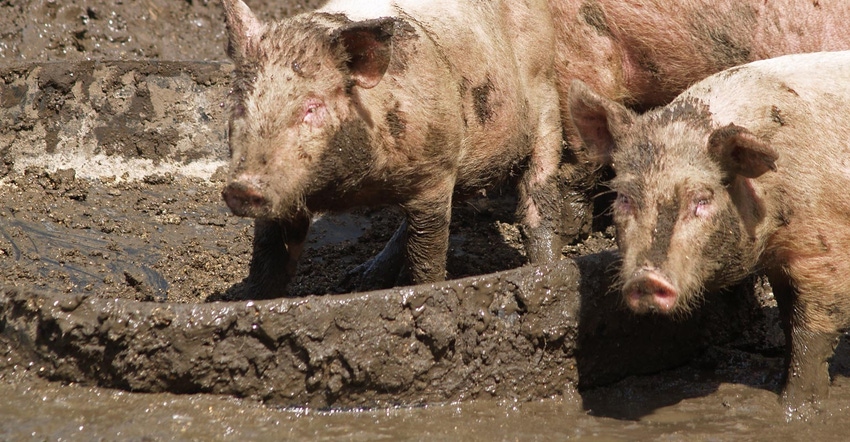July 30, 2020

During hot and humid Missouri days, it’s not uncommon to hear people say they are “sweating like a pig.” But pigs can’t sweat, says University of Missouri Extension swine nutritionist Marcia Shannon, so it takes the animals' owners to help these hogs beat the heat.
Unfortunately, pigs can’t cool off by perspiring like other livestock or humans. They simply have fewer sweat glands. For that reason, Shannon says, pigs rely on their caretakers to provide relief from the stifling heat.
Heat stress can happen quickly in pigs that weigh more than 100 pounds when temperatures exceed 80 degrees F and relative humidity is above 50%. Heat stress often causes animals to go off feed. However, high temperatures can reduce semen production in boars, and pigs breed less, resulting in lower conception rates.
Shannon offers seven ways to improve pig comfort:
1. Adjust feed time. Feed during morning or late-evening hours when there is less severe sunlight and heat.
2. Provide constant water supply. Allow animals to freely drink fresh water at room temperature or lower. Water flow should be at least 1 gallon per minute for sows with litters and 0.5 to 0.6 gallons per minute for finishing pigs.
3. Spray the skin. Use a hose or sprinkler to run cool water over the pigs’ skin. Let skin dry before wetting again.
4. Get muddy. Shade and mudholes provide relief to outside pigs. When pigs roll in mud, the mud cools and coats their skin to prevent sunburn.
5. Remove hot hogs. Move overheated pigs away from other pigs. Wet their skin with cool but not ice-cold water. Let them dry. Repeat as needed. Pigs will lie in cool areas and seek space away from other pigs when hot. They also move less.
6. Monitor stress levels. Watch for stressed breathing patterns or panting, one of the first signs of heat stress. More than 50 breaths per minute indicates stress. It may be time to call a veterinarian for assistance.
7. Boost nutrition. Eating and digestion generate heat, so pigs eat less when it’s hot to control their internal body temperature. Add more fat to rations. This reduces heat increment and boosts energy. When doing so, increase protein in diets and add cool water to feed to stimulate intake.
Inside comfort
Confinement operators also can take simple steps to reduce heat, says Joe Zulovich, MU Extension agricultural engineer.
First, clean building fans with brooms or power washers. Dirty exhaust fan systems can reduce airflow by half.
Inside temperatures should be no more than 3 to 5 degrees higher than outside temperatures when the ventilation is adequate. If not, check and clean fans, grilles and shutters, and call a ventilation system professional.
Source: University of Missouri Extension, which is solely responsible for the information provided and is wholly owned by the source. Informa Business Media and all its subsidiaries are not responsible for any of the content contained in this information asset.
You May Also Like




